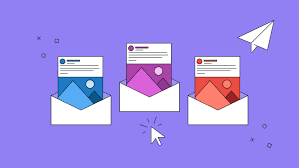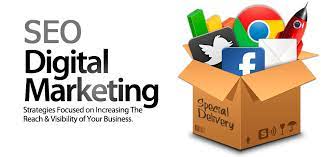Email Marketing: The Powerhouse of Digital Communication
In today’s fast-paced digital world, businesses are constantly seeking effective ways to reach their target audience and drive conversions. One of the most powerful tools at their disposal is email marketing. With its ability to deliver personalized messages directly to the inbox of potential customers, email marketing has become a cornerstone of successful digital communication strategies.
So, what exactly is email marketing? In simple terms, it involves sending commercial messages to a group of people via email. These messages can be anything from promotional offers and product updates to newsletters and customer surveys. The key lies in crafting compelling content that resonates with the recipients and prompts them to take action.
One of the greatest advantages of email marketing is its cost-effectiveness. Compared to traditional marketing channels like print media or television advertising, email campaigns can be executed at a fraction of the cost. This makes it an ideal choice for businesses with limited budgets or those looking for a high return on investment.
Another significant benefit is the ability to target specific audiences. Email marketing allows businesses to segment their contact lists based on various criteria such as demographics, interests, or previous purchase history. By tailoring messages to specific groups, companies can deliver highly relevant content that speaks directly to the recipients’ needs and interests.
Personalization is key in today’s consumer-centric era, and email marketing excels in this aspect. Advanced automation tools enable businesses to send personalized emails based on triggers such as birthdays, abandoned carts, or previous interactions with the company’s website or products. This level of personalization enhances customer engagement and builds trust by showing that the business understands and values each individual recipient.
Furthermore, email marketing provides measurable results through detailed analytics. Businesses can track open rates, click-through rates, conversion rates, and other key performance indicators (KPIs) to evaluate the success of their campaigns. This data-driven approach allows companies to make informed decisions about future strategies and optimize their email marketing efforts for maximum impact.
However, it’s important to note that successful email marketing goes beyond simply sending out mass emails. Building a quality contact list is crucial, and businesses should focus on obtaining permission from recipients to ensure compliance with data protection regulations. Additionally, creating compelling and engaging content that stands out in crowded inboxes is essential. A well-designed email with clear call-to-action buttons and visually appealing elements can significantly improve conversion rates.
In conclusion, email marketing remains a powerful tool for businesses seeking to connect with their audience in a direct and personalized manner. With its cost-effectiveness, targeted approach, personalization capabilities, and measurable results, it continues to be an integral part of successful digital marketing strategies. By leveraging the potential of email marketing, businesses can forge stronger relationships with customers, increase brand loyalty, and ultimately drive business growth in today’s competitive landscape.
Common Questions Answered: A Guide to Email Marketing in the UK
- How to create an email marketing?
- What are the 4 types of email marketing?
- What are the methods of email marketing?
- What are the 4 Ps of email marketing?
How to create an email marketing?
Creating an effective email marketing campaign involves several key steps. Here is a step-by-step guide to help you get started:
- Define your goals: Determine the purpose of your email marketing campaign. Are you trying to promote a new product, drive traffic to your website, or nurture leads? Clearly define your objectives to guide your campaign strategy.
- Build a quality email list: Focus on growing a permission-based email list of individuals who have willingly opted in to receive communications from you. Offer incentives such as exclusive content or discounts to encourage sign-ups.
- Choose an email marketing platform: Select a reliable email marketing platform that suits your needs and budget. Popular options include Mailchimp, Constant Contact, and ConvertKit. These platforms provide user-friendly interfaces for designing and sending emails, as well as tracking campaign performance.
- Segment your audience: Divide your email list into smaller segments based on demographics, interests, or previous interactions with your business. This allows you to send targeted and personalized messages that resonate with specific groups.
- Craft compelling subject lines: Your subject line is the first thing recipients see in their inbox, so make it attention-grabbing and enticing. Use concise language that sparks curiosity or offers value to encourage recipients to open the email.
- Design engaging emails: Create visually appealing emails that align with your brand identity. Use professional templates provided by the email marketing platform or customize them according to your preferences. Include relevant images, clear calls-to-action (CTAs), and concise yet persuasive copy.
- Personalize content: Tailor the content of each email based on recipient segmentation data or previous interactions with your business. Address recipients by name and deliver relevant content that speaks directly to their interests and needs.
- Test and optimize: Before sending out emails to your entire list, conduct A/B testing on different elements such as subject lines, CTAs, or visuals to determine what resonates best with your audience. Use the insights gained to optimize future campaigns.
- Monitor and analyze results: Track key metrics such as open rates, click-through rates, conversion rates, and unsubscribe rates to evaluate the success of your campaign. Analyze the data provided by your email marketing platform to gain insights into recipient behavior and preferences.
- Continuously improve: Learn from your campaign results and make adjustments accordingly. Experiment with different strategies, content formats, and timing to optimize engagement and conversion rates over time.
Remember to comply with data protection regulations, such as obtaining permission from recipients and providing an easy way to unsubscribe from your emails.
By following these steps and consistently refining your approach, you can create compelling email marketing campaigns that effectively engage your audience, drive conversions, and contribute to the growth of your business.
What are the 4 types of email marketing?
There are four main types of email marketing campaigns that businesses commonly use:
- Promotional Emails: These emails are focused on promoting a specific product, service, or offer. They aim to generate sales or conversions by highlighting the benefits, features, and value of the offering. Promotional emails often include discount codes, limited-time offers, or exclusive deals to incentivize recipients to take action.
- Newsletter Emails: Newsletter emails are a way for businesses to regularly communicate with their subscribers and provide valuable content. These emails typically contain industry news, updates about the company, helpful tips, educational content, or curated resources. The goal is to engage and nurture the relationship with subscribers while positioning the business as a trusted authority in their field.
- Transactional Emails: Transactional emails are triggered by specific actions taken by customers or subscribers. Examples include order confirmations, shipping notifications, password resets, or account updates. While primarily serving a functional purpose, transactional emails can also be an opportunity to cross-sell or upsell related products or services.
- Automated Email Campaigns: Automated email campaigns are pre-planned sequences of emails triggered by certain events or user behaviors. These campaigns can be designed to nurture leads through a sales funnel or re-engage inactive customers. Examples include welcome series for new subscribers, abandoned cart reminders, or anniversary offers for loyal customers.
Each type of email campaign serves a different purpose and requires careful planning and execution to achieve desired outcomes. By strategically combining these types based on business goals and target audience needs, companies can create comprehensive email marketing strategies that drive engagement and conversions.
What are the methods of email marketing?
Email marketing encompasses various methods and strategies to effectively reach and engage with the target audience. Here are some commonly used methods of email marketing:
- Newsletter Campaigns: Newsletters are a popular method of email marketing used by businesses to regularly communicate with their subscribers. These emails typically contain updates, news, promotions, and valuable content related to the business or industry.
- Promotional Emails: Promotional emails focus on promoting specific products, services, or offers to drive sales and conversions. These emails often include enticing discounts, limited-time offers, or exclusive deals to encourage recipients to take action.
- Welcome Emails: When someone subscribes to a mailing list or becomes a new customer, sending a welcome email is an effective way to make a positive first impression. Welcome emails can include a warm greeting, an introduction to the brand, and valuable information or resources that help new subscribers get started.
- Drip Campaigns: Drip campaigns involve sending a series of pre-planned emails over time to nurture leads and guide them through the customer journey. Each email in the sequence is strategically designed to provide relevant information and move recipients closer to making a purchase or taking a desired action.
- Abandoned Cart Emails: When someone adds items to their online shopping cart but doesn’t complete the purchase, businesses can send abandoned cart emails as gentle reminders. These emails often include incentives like discounts or free shipping to entice recipients back to complete their purchase.
- Re-Engagement Emails: Re-Engagement emails are sent to inactive subscribers with the aim of rekindling their interest in the brand or encouraging them to take action. These emails may offer exclusive content, special offers, or ask for feedback on how the business can better serve their needs.
- Transactional Emails: Transactional emails are triggered by specific actions taken by customers such as order confirmations, shipping notifications, password resets, and account updates. While primarily functional in nature, these emails can also be an opportunity to include personalized recommendations or cross-sell related products.
- Surveys and Feedback Emails: Businesses often use email marketing to gather valuable insights from their audience through surveys and feedback emails. These emails provide a platform for customers to share their opinions, suggestions, and experiences, helping businesses improve their products or services.
It’s important to note that regardless of the method used, successful email marketing relies on factors such as compelling subject lines, engaging content, clear call-to-action buttons, responsive design for mobile devices, and adherence to data protection regulations. By employing a combination of these methods and continuously optimizing their email campaigns based on analytics, businesses can achieve higher engagement rates and drive desired outcomes.
What are the 4 Ps of email marketing?
The 4 Ps of email marketing are:
- Permission: Obtaining permission from recipients is the foundation of ethical and effective email marketing. Building a quality contact list with individuals who have willingly opted in to receive your emails ensures compliance with data protection regulations and helps maintain a positive sender reputation.
- Personalization: Personalization is key to engaging recipients and driving conversions. By segmenting your contact list based on various criteria such as demographics, interests, or previous interactions, you can tailor your email content to specific groups. This level of personalization demonstrates that you understand and value each recipient, increasing the chances of a positive response.
- Purpose: Every email you send should have a clear purpose. Whether it’s promoting a new product, sharing valuable content, or offering exclusive discounts, your emails should provide value to the recipients. Clearly communicate the purpose of your email through compelling subject lines and concise content that drives action.
- Performance: Monitoring and analyzing the performance of your email campaigns is essential for continuous improvement. Track metrics such as open rates, click-through rates, conversion rates, and unsubscribe rates to evaluate the success of your campaigns. Use this data-driven approach to optimize future strategies and make informed decisions about how to enhance your email marketing efforts.
By focusing on these 4 Ps – Permission, Personalization, Purpose, and Performance – businesses can create effective and impactful email marketing campaigns that resonate with recipients and drive desired outcomes.


